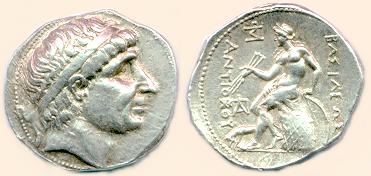| REFERENCE INDEX | HOME | SALES GALLERY |
APOLLO
Apollo, one of Zeus's many children and twin of Artemis, was born of Leto. Usually portrayed as a youth of great beauty, often with very effeminate features; on some coins he can be mistaken as female, but one should not be misled by this. He was a powerful god of great strength and prowess, once having fought Herakles on an equal footing. Vengeful and quick to bring disaster and death to those who stood against him, he could be equally compassionate to those who showed him favour.
 |
Apollo had many, sometimes contradictory, attributes. As a solar god, he did not directly represent the sun, but he was a protector of crops and caused fruit to ripen. He is often shown holding a bow with arrows symbolizing the sun's rays. As an archer he was also known as "Hecatebolos", the god of sudden death. He was also a healer who drove out illness, and the father of Asclepius (the god of medicine), but in one legend he brings a terrible plague upon Argos where the king had put one of Apollo's lovers to death.
As a musical god in charge of song and the lyre, he is often shown holding a lyre. On coins which show only a lyre, the reference is usually to Apollo. Another of his symbols is the tripod used at his sanctuary at Delphi, where he was a god of prophecy.
Representation of Apollo, or symbols referring to him, are very common on coins from around the ancient Greek world, and he continued to appear on many Roman coins up to the 3rd century AD. His cult was very popular and of great importance.
If you entered this page from a coin description, use the back button to return to that position.
Mythology Index
| Main index | Reference Index | Home page |
Copyright © 2000 R & T Enterprises Ltd.